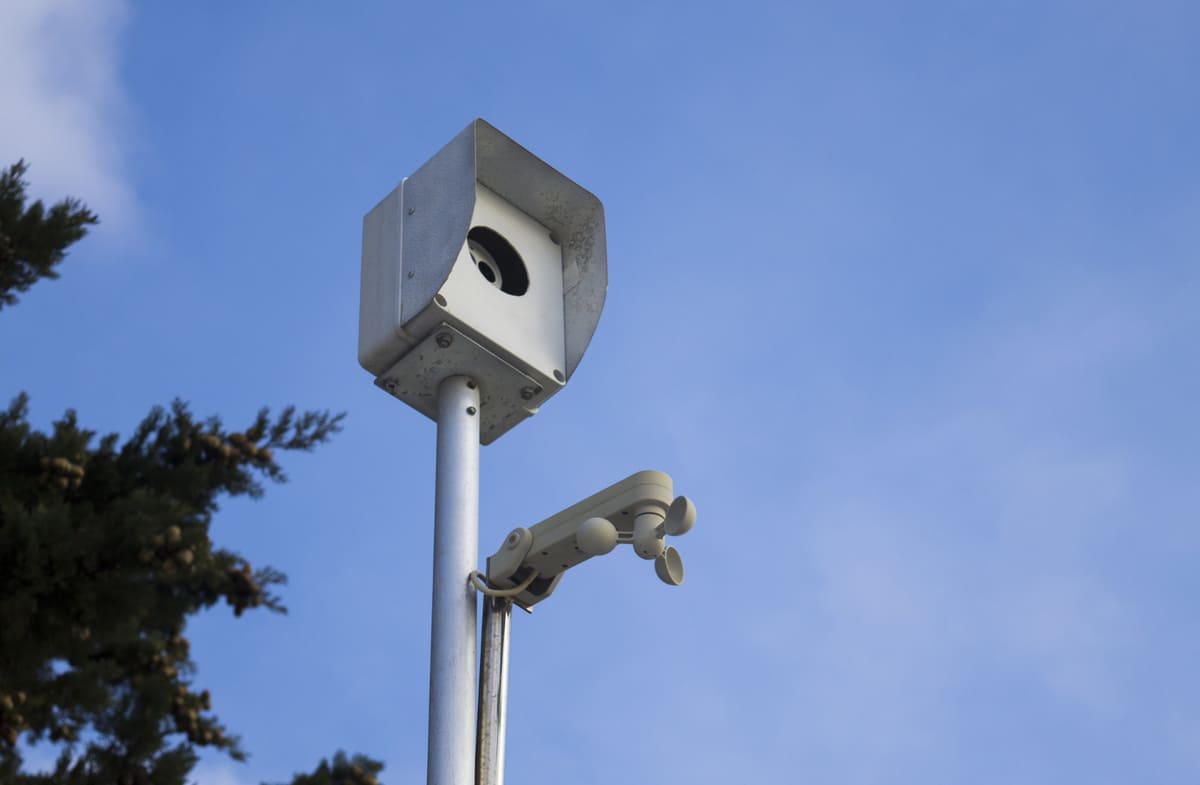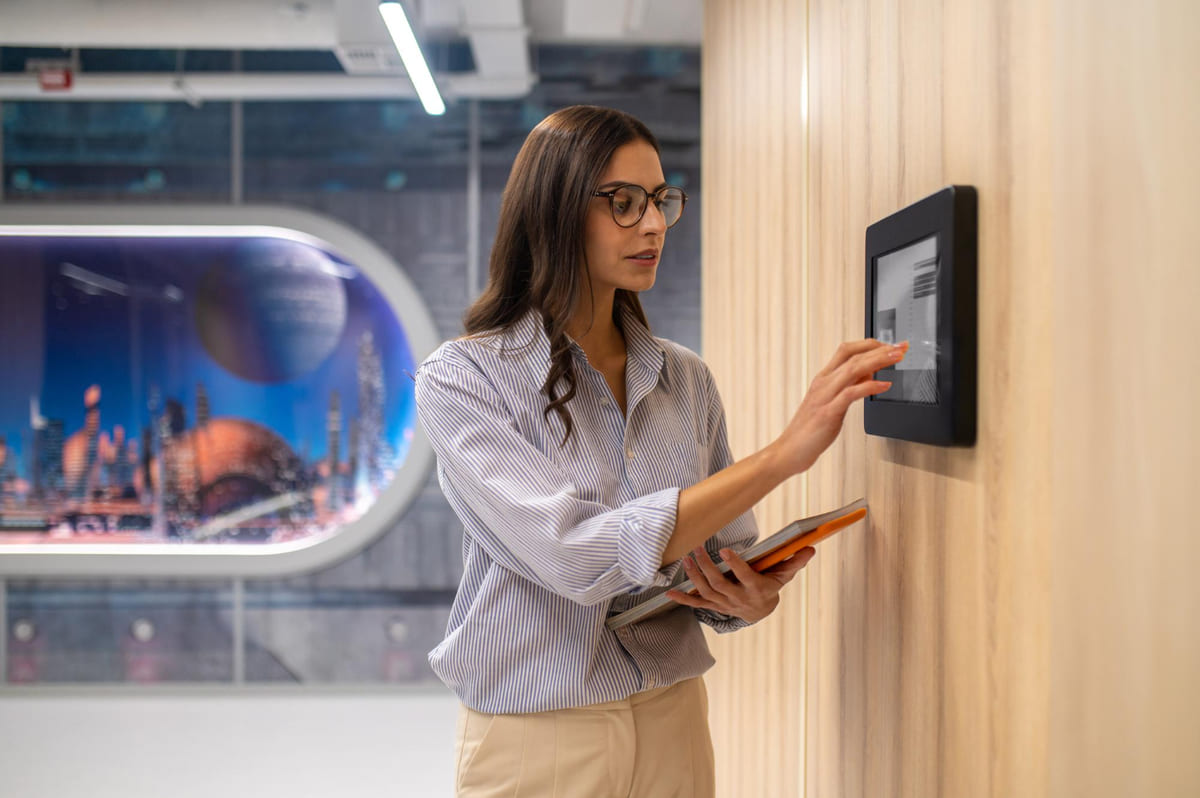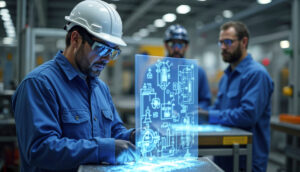Site security faces evolving challenges across construction sites, commercial buildings, critical infrastructure, and residential settings. Traditional alarm systems often struggle with vast perimeters, remote locations, and diverse environmental conditions. At the same time, attackers use smarter tactics, requiring more reliable and agile protection. The Future of Site Security lies in advanced alarm technologies that offer better intelligence, faster response, and flexible deployment. These emerging alarm systems combine sensors, analytics, and connectivity to detect intrusions or hazards more accurately and to alert responders in real time. As digital transformation takes hold, alarm technology is becoming central to robust site protection.
Table of Contents
Current Limitations of Traditional Alarm Systems
1. High False Alarm Rates
Conventional alarms suffer from extremely high false alarm rates. Studies show that 90–99% of burglar or panic alarm calls are false. Factors like weather, animals, or sensor faults routinely trigger alerts that aren’t real emergencies. Every false alarm diverts resources and causes “alarm fatigue,” where security staff or responders ignore repeated non-events. For example, video-based intrusion systems can cost $150 or more per false alarm to resolve and collectively waste billions of dollars in manpower each year. Reducing false positives is therefore a key challenge.
2. Limited Real-Time Awareness
Traditional systems also lack continuous, real-time awareness. Basic alarms (like door contacts or motion sensors) only signal when tripped, but provide no context or ongoing tracking. Conventional cameras may record video, but monitoring multiple cameras live is labor-intensive. As one analysis notes, standard cameras “cannot accurately measure distance, trajectory or speed” and struggle to track people across large sites. In practice, many sites cannot detect or deter intruders quickly. For example, remote construction projects “remain at constant risk” without the ability to detect and deter threats in real time. The delay in recognizing and verifying alarms undermines security responsiveness.
3. Inflexibility Across Site Types
Old-fashioned alarm setups are not one-size-fits-all. Hardwired systems and fixed-installation sensors are difficult to adapt when site conditions change. Construction sites are a clear case: layouts shift daily as equipment and materials move. Yet a hardwired alarm can’t easily follow those changes. Likewise, many infrastructure sites lack reliable power or wiring.
As LVT explains, remote construction locations are often off-grid and “running electrical lines… for sites that are temporary or constantly changing… is expensive and… nonsensical”. Even for buildings or homes, fixed sensors limit how alarms can be deployed. In contrast, modern wireless and modular components allow flexible sensor placement and portability. Overall, traditional systems tend to be inflexible: they cannot scale across multiple sites easily, nor adjust as layouts or needs evolve.
Suggested article to read: Ultimate Guide to Landslide Sensors 2024

Technological Innovations Transforming Alarm Systems
1. AI-Powered Intrusion Detection and Analytics
Artificial intelligence and machine learning are revolutionizing alarm analytics. AI algorithms can analyze camera video and sensor data to distinguish real threats from nuisance events. For example, deep-learning analytics identify humans or vehicles in surveillance feeds and filter out animals, shadows, or weather effects that would normally trigger false alerts. By flagging only genuine intrusions, AI can drastically cut false alarms.
Industry reports note a surge in AI-driven security solutions as models and hardware mature. Providers are integrating AI video analytics, audio sensors, and behavioral rules into unified platforms. These systems can detect suspicious behaviors (loitering, line-crossing, etc.), instantly analyze patterns, and trigger smart alerts. Real-world tests show AI-driven security can reduce alerts by well over 90%, allowing human operators to focus on real incidents.
2. IoT-Connected Sensors and Remote Monitoring
The Internet of Things (IoT) is expanding the reach of alarm systems. Countless sensors — motion detectors, door/window contacts, glass-break detectors, temperature monitors, and more — can now connect via Wi-Fi, cellular or other networks. Each sensor becomes an IoT device that communicates events to a central system or cloud service. This connectivity lets security teams monitor sites remotely from anywhere. For example, modern construction-site systems use solar-powered gateways and cellular links to stream camera feeds to the cloud for 24/7 monitoring.
In homes and offices, smart security hubs tie sensors and cameras into mobile apps, so owners can view alerts on their smartphones immediately. The global smart-home security market reflects this trend: valued at $29 billion in 2024 and growing rapidly, it is driven by “remote monitoring and control features that allow homeowners to access… security systems via their mobile phones or tablets from any location”. In summary, IoT-enabled alarm sensors and cloud platforms provide continuous, centralized visibility across sites, transforming siloed alarms into connected, manageable data streams.
3. Edge Computing and Low-Latency Response
Edge computing pushes processing power into sensors and cameras themselves, minimizing delay in threat detection. Instead of sending every bit of raw data back to a distant server, intelligent devices analyze inputs locally. This dramatically cuts latency. As one industry blog explains, edge computing “decentralizes processing power to ensure real-time processing without latency while reducing bandwidth”
In practice, this means a camera with onboard analytics can immediately flag and transmit only an alert event, rather than streaming video constantly. For site security, this yields faster response times and more robust operation (even if network links are slow or down). For example, smart cameras can trigger alarms instantly at the edge, and robotic patrol devices can react immediately to local triggers. Low-latency edge processing is especially vital for critical sites: it makes automated alarms, access control decisions, and even remote defences (like lockdown commands) happen in near real time.
4. Autonomous Drones and Robotic Patrols
Emerging alarm architectures are increasingly including mobile agents: autonomous robots and drones. These extend physical security coverage far beyond fixed sensors. Security robots can roam indoors and outdoors, patrolling predetermined routes with onboard cameras, lidar, and radar. They operate 24/7 without breaks or fatigue, covering “no blind spots” and complementing fixed systems. Similarly, drones (unmanned aerial vehicles) can be dispatched to alarm locations in seconds.
They provide aerial surveillance and rapid situational awareness. For example, one report notes drones can be on scene “in under 70 seconds, bypassing traffic and physical barriers” to support emergency response. Drones can patrol large perimeters that fixed cameras cannot see and use thermal imaging or spotlighting in low-light conditions. These robotic systems can also autonomously investigate or report alarms. In one “Drone-as-First-Responder” example, drones handled about 25% of incident calls entirely on their own, resolving the situation before human officers even arrived. Overall, AI-driven robots and drones act as force multipliers – they reach alerts rapidly, verify threats, and free human guards for high-priority tasks.
5. Integrated Multi-Threat Platforms
Finally, the most advanced alarm systems are multi-threat platforms that integrate many sensor types and functions. Instead of separate systems for intrusion, fire, flood, or access control, integrated platforms unify them under a common interface. Manufacturers now offer multi-sensor devices (combining infrared, microwave, radar, etc.) and software that correlates multiple data streams. For instance, new intrusion sensors may combine motion and video detection to cross-verify alarms, or fuse audio and visual cues.
One leading security product (Avigilon Alta Protect) explicitly “combines AI-driven video and audio analytics, sensor data and a powerful rules engine to detect, deter and respond to incidents”. These integrated systems can apply rich analytics across all feeds, improving accuracy and situational context. By leveraging correlations across diverse inputs (e.g. a door sensor + camera + badge reader), they further cut false positives. In effect, integrated multi-threat alarm platforms create a single “nerve center” for site security, enhancing reliability and reducing the need to juggle separate alarm subsystems.
Applications Across Different Site Types
1. Construction Sites
Construction zones are notoriously vulnerable to theft, vandalism, and accidents. They also change constantly – layouts shift, equipment moves, and power access can be limited. Modern alarm solutions for construction use mobile, solar-powered towers or small gateways that can be relocated as needed. These units typically include wireless cameras, motion sensors, and sirens, all networked together. Remote connectivity (cellular or satellite) lets project managers monitor sites from afar.
AI analytics help distinguish a curious worker from an intruder after hours. Drones may patrol over large outdoor worksites or scan rooftops. The result is security that flexes with the project. For example, one provider offers plug-and-play wireless systems that project managers can set up in minutes without running wires. Integrated alarms on construction sites might also detect environmental hazards (fire, gas leaks) in addition to intrusion. In short, the future of construction-site security combines adaptability (portable wireless devices) with sophistication (smart analytics), a huge step beyond old motion detectors and unmonitored locks.

2. Commercial Buildings
In office complexes, retail malls, and factories, emerging alarms tie into building management and access control. Smart commercial systems use networked IP cameras with AI for real-time intrusion detection. Integrated analytics can monitor entry points (detecting forced entries) and interior zones (spotting loitering or tailgating). Importantly, these alarms connect with other building systems: for example, an alarm can automatically unlock emergency exits, switch on additional lighting, or trigger digital signage to lock doors.
Platforms like Avigilon Alta Protect are designed for such environments: they merge video and sensor data so that an alarm is corroborated by multiple signals. Access credentials (keycards or biometrics) also integrate with alarms, so unauthorized access attempts generate instant alerts. Moreover, facilities can use historic alarm and access logs to audit incidents and fine-tune security policies. Overall, commercial alarm technology is becoming highly holistic and data-driven, ensuring that office buildings and shops are protected by layers of smart detection and response actions.
3. Critical Infrastructure
Facilities like power plants, water treatment centers, telecommunications hubs, and government installations require the highest security. These sites are embracing digital alarm systems connected to IT networks for comprehensive oversight. As one report notes, sensors for critical infrastructure now include anything from temperature monitors to advanced surveillance cameras, all managed via IT platforms.
A key trend is moving physical security into the cloud: access control panels and cameras are operated through web dashboards. This centralization lets security teams monitor multiple sites from a single control center. For example, remote or isolated utility sites can be reached via cellular gateways that link cameras to the cloud; one police department installed a surveillance camera at a remote trailhead using a cellular uplink and immediately halted frequent auto break-ins. In critical environments, AI helps analyze vast sensor data (e.g. combining intrusion alarms with SCADA systems)
After incidents, cloud archives make it much faster to investigate: a utility operator was able to locate a theft on camera in “less than 10 minutes” by querying cloud-stored video. Cybersecurity is also top-of-mind: alarms and cameras are hardened and segmented to resist hacking, since nation-state threats to critical infrastructure are well documented. In summary, critical infrastructure sites use alarm technology that is integrated, highly reliable, and cyber-secure, reflecting the gravity of their mission.
4. Residential Environments
Home and residential security has rapidly adopted these new alarm technologies as well. Smart home systems unite door/window sensors, motion detectors, smoke alarms, and cameras into an Internet-connected network. Many households now use wireless DIY alarm kits and video doorbells that stream footage to smartphones. Here, ease of use and integration with consumer tech are key. For example, geofencing can arm or disarm alarms when residents leave or return, and mobile push-notifications instantly alert homeowners of intrusions.
The residential market’s embrace of IoT is substantial: the global smart home security market was $29.0 billion in 2024 and is projected to triple by 2032. This growth is powered by features like remote monitoring via mobile apps and voice assistants. Privacy and safety features are built in (e.g. cameras streaming only on command). In multi-unit dwellings or gated communities, local alarm hubs can aggregate inputs from individual apartments. In essence, even everyday homes now benefit from technologies developed for larger sites: AI motion detection, cloud storage of alarm events, and seamless connectivity make residential security smarter and more responsive than ever.
Implementation Considerations and Security Design
1. Scalability and Integration
Designing a security system for the Future of Site Security means planning for growth and interoperability. Modern alarm platforms are inherently modular. Systems use plug-and-play sensor modules and cloud services so that new devices (cameras, detectors, access readers) can be added on demand. This means a company can start with a few sensors and easily expand to dozens across multiple locations.
Integration is equally important: security devices must work with existing infrastructure. In practice, many organizations swap in cloud-managed panels that tie into legacy wiring and sensors. For example, one city police department replaced its old access panel with a cloud-based unit and simply reconnected the existing door locks. The new cloud panel then displayed badge-in/out data and linked camera footage on a unified dashboard. In short, scalable security design uses open interfaces and cloud platforms so that sites, sensors, and applications all work together seamlessly.
2. Cybersecurity in Alarm Networks
As alarms become connected, cyber threats are a serious concern. Each networked camera or sensor is also an Internet endpoint that can be targeted. Vulnerabilities include default passwords, unencrypted data, and outdated firmware. Cybersecurity measures must be built in from the start. This means using encrypted communications (e.g. TLS), strong device authentication, and regular patching. Industry analysts warn that insecure IoT devices can give attackers a “foothold” on a network, potentially exposing critical data. For site security, a hacked alarm system could allow intruders to disable sensors or spy on video feeds.
Therefore, alarm networks should be segmented (isolated from general IT networks) and monitored for anomalies. Intrusion detection also applies to cyber: systems can flag unusual network behavior or unexpected sensor inputs. In practice, securing alarm networks also means following IT best practices: firewalls, VPNs for remote access, and compliance with security standards. This cyber-physical defense-in-depth is now an essential part of alarm system design in critical and commercial sites.

3. Privacy and Regulatory Compliance
Finally, modern alarm systems must respect privacy laws and regulations. Surveillance cameras and biometric sensors capture personal data, so designers must implement controls around data use and storage. For example, in many jurisdictions facial recognition data is legally sensitive. California’s privacy law (CCPA) explicitly treats face imagery as “biometric information,” meaning it falls under strict consent and deletion rules. In practice, systems may need features like “forget” or automatic data purging when requested.
Signage and policies must inform people that recording is happening. Data encryption and limited retention are often required by law. Systems that provide personal alarm alerts (e.g. panic buttons for lone workers) must be carefully logged. Compliance also involves following standards: some security cameras are certified for data protection (e.g. certified GDPR compliance) or adhere to building codes for alarm audibility. By designing with privacy in mind, security installations avoid legal issues and maintain public trust.
FAQs
How will AI impact the Future of Site Security?
AI will make alarms far more accurate and proactive. Machine-learning analytics can distinguish real threats from false ones, using patterns like object recognition and behavior analysis. In the future, alarms will rely on AI to flag suspicious activities (for example, someone climbing a fence or lingering in a restricted area) with minimal human input. This means operators will see far fewer nuisance alarms and can respond faster to true intrusions. Overall, AI enhances detection capabilities and helps security teams prioritize real events.
What role does IoT play in the Future of Site Security?
IoT is the backbone of future alarm networks. Connected sensors (motion detectors, smart cameras, environmental monitors, etc.) continuously report data to central systems or mobile apps. This allows 24/7 remote monitoring and instant alerting from any site, whether a skyscraper lobby or a rural substation. IoT also enables integration: alarms can trigger other smart devices (e.g. locking a door or flashing lights). In short, IoT makes security systems scalable and accessible, turning isolated alarms into a unified, always-on network.
Which emerging technology will have the most impact on the Future of Site Security?
While all innovations will play roles, AI-powered analytics and integrated multi-threat platforms are particularly impactful. Together, they transform raw sensor data into intelligent insights. AI lets systems learn and adapt to each site’s normal conditions, minimizing false alarms. Integrated platforms combine video, access control, and intrusion sensors into one coordinated response. This synergy means future sites can detect complex threats (like coordinated intrusions or insider breaches) that old alarms would miss. In essence, smart analytics and integration will underpin the most advanced security solutions.
Is it true that the Future of Site Security will eliminate the need for human guards?
No – emerging alarm technologies complement, not fully replace, human teams. Robots and drones excel at routine patrols and rapid scans, but they work best under human supervision. Security personnel will still interpret complex situations, make judgment calls, and handle sensitive interactions. In practice, technology handles repetitive monitoring and initial verification. As one analysis notes, automation “is not about replacing humans… it’s about complementing human skills”. In the future, guards will be more supported by alerts and situational data from smart alarms, enabling them to respond more effectively rather than acting as the first line of detection.
Conclusion
Emerging alarm technologies are making site security more reliable, responsive, and adaptable. AI-driven analytics greatly improve intrusion detection and slash false alarms. IoT sensors and cloud connectivity provide real-time monitoring across diverse locations. Edge computing and high-speed networks ensure that alarms trigger instant responses. Autonomous robots and drones extend surveillance reach and cut reaction times, while integrated platforms tie together all threat types under one intelligent system.
Together, these advances mean future alarm systems will be smarter at distinguishing real dangers, faster to signal the right people, and flexible enough to suit any site — from rugged construction zones to downtown offices and remote infrastructure. In the Future of Site Security, organizations will be able to trust alarms more than ever, ensuring that alerts mean action, and security staff can focus on what truly matters: protecting people and assets.
Resources:
- CentralSquare. (2024). False Alarm Management: Public Safety Challenges and Solutions.
- Ouster. (2024). Lidar’s Advantage Tackling False Alarms with Intrusion Detection in Perimeter Security.
- LVT. (2025). Securing Remote Construction Projects: Challenges and Solutions.
- Delta Prime. (2024). Wired vs Wireless Alarm Systems: Differences, Pros & Cons.
- Omdia. (2025). Breaking Down the Top Five Security Trends at ISC West 2025.
- Avigilon. (2024). Avigilon Alta Protect (AI-Driven Video and Sensor Security).
- Fortune Business Insights. (2025). Smart Home Security Market Size, Share & Forecast.
- BMC Software. (2018). Edge Computing: An Introduction with Examples.
- Teal Communications. (2025). The Growing Importance of Robots and Drones in Security and Public Safety.
- StateTech Magazine. (2025). Tech Trends: Law Enforcement, Utilities Digitize Physical Security.
- Telsco Security. (2024). Choosing Scalable Security Systems for Growing Businesses.
- Fortinet. (2024). Top IoT Device Vulnerabilities: How to Secure IoT Devices.
- Rhombus Systems. (2020). Staying in Compliance with CCPA and BIPA for Video Security.
- Clarip Privacy. (2020). How the New California Privacy Law (CCPA) Handles Facial Recognition.
For all the pictures: Freepik
Suggested article for reading:
5 Common Types of Concrete Sensors and Their Roles in Modern Construction
8 Must-Know Principles of Modern Architecture for Aspiring Designers
Top 7 Home Security Alarm Systems for 2025: Protect Your Home with the Latest Technology
Top 10 Modern Architecture Styles: From Bauhaus to Brutalism
Biophilic Design in the Workplace: Boosting Employee Well-being and Productivity




